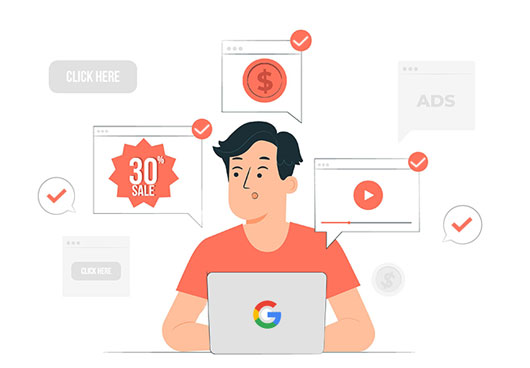Top 5 Successful Digital Marketing Campaigns
Contributors:
Amol Ghemud
Published: August 14, 2018
![]()
Digital marketing continues to steamroll the competition. Online ad spend has been increasing ever year for two decades, but we can see the emergence of a “third wave” of digital marketing built upon the early successes of Internet pioneers. The downfall of some of those original marketers whose good ideas just didn’t quite work out.
Here are a few of the surprise winners. People and companies that dared to look beyond conventional wisdom to find great success:
Don’t Underestimate the Power of Imagery – GoPro
Have you been following GoPro? The video camera company GoPro has fabricated its digital strategy around remarkable visuals. With 3.2 million subscribers on its YouTube channel and 6,000 GoPro-labeled videos uploaded each day the company has a client base that is locked in.
Close by YouTube, GoPro has a few hundred thousand sucscribers of its other channels (World, MX, and Tutorials) while its Instagram sustain brags 4.2 million followers which include amazing pictures and videos that feature its product without really concentrating on the product itself.
Yes, this is a skateboarding cat… but it’s also a genuinely authentic piece of content that originated organically via the community of GoPro users all over the world – a far cry from any big-budget agency brief and ad campaign.
They engage with authentic and often impressive content. Consuming GoPro’s content is widely shared and reported on, and is fast becoming a natural part of the lives of all consumers of digital media.
No One Had More Success than Donald Trump
Political campaigns have been dominated by Big Money, Huge Organizations, and the Two-Party System since George Washington’s day. Now, Mr. Trump blew that paradigm away.
Not only did he win despite spending way less money that everyone, he did it without the massive ground game in 50 states that Ms. Clinton had organized and without the support of the Republican Party. In pulling off the Biggest Upset Ever, Trump leveraged digital marketing campaigns like no one has ever.
More accurately, Trump leveraged his son-in-law, Jared Kushner, a media-savvy guy married to Ivanka Trump, a media-savvy gal. Kushner founded the New York Observer, an online news magazine in 2006 and later, Cadre, an internet portal for large real estate projects.
According to a Forbes Magazine interview, after joining the Trump campaign, Kushner called in chits from some of his Silicon Valley connections to design a social media strategy.
Utilizing Facebook micro-targeting and focusing on the states they identified would have to be flipped from Clinton’s Electoral College “Blue Wall,” Kushner began with the campaigns merchandising initiative and quickly ramped sales from less than $8,000 a day to over $80,000 a day.
The strategy synced with Trump’s personal style of blunt, concise talking points and exaggerated hyperbole that had already captured a huge Twitter and Facebook audience and billions of dollars’ worth of free television exposure. Trump was already a media juggernaut, but Kushner quickly monetized and focused the campaign.
Next, he produced a series of YouTube videos for a mere $160,000 that featured the same low-tech, blunt style. More than 74 million views later, Trump’s internet presence dwarfed Clinton’s best efforts. Just as Trump’s business success required a keen eye on the bottom line, the campaign’s strategies based on ROI. Rather than depending on wealthy donors to fund whatever-it-costs initiatives, the Trump campaign made decisions based on which program got the most “bang for the buck.
For more info – Forbes
Nothing is Bigger than the Super Bowl
Source- respect-mag.com
As the Number 1 television event year after year with more than 114 million viewers last year, 30 seconds of Super Bowl airtime is an advertiser’s dream. But, it’s a pricey dream – last year’s event sold half-minute ads for $4.5 million and CBS is asking $5 million for this year’s game. When your budget can only buy a couple of seconds at that rate, you have to innovate.
That’s exactly what the creative minds at advertising agency Newcastle Brown Ale did. With a couple of clients looking for a way to get a toehold on that Super Bowl audience, without the dollars to buy in, they had to break the mold. The result: The Super Bowl Battle of the Brands – a melee of second-tier brands battling it out in one TV commercial.
Nominated by Salesforce.com as one of the year’s top marketing campaigns, Newcastle borrowed the concept of crowdsourcing and shared economies that make Kickstarter, Uber, AirBnB and others successful. The agency recruited 20-30 (who could count?) companies to join in one Super Bowl ad with everyone sharing the cost and competing for exposure.
In a way no one could predict, it clicked, earning the consortium more than 2.3 billion campaign impressions during the game and afterward on social media. Rather than presenting a confusing message with no one company able to rise above the pack, the ad was seen as a tongue-in-cheek dig at the high cost of Super Bowl ads in general.
People got it, the brands got their logos in front of the people, and Newcastle got a whole lot more clients. Viewers may not have learned a lot about Rotel, McClures Specialty Foods, Krave Jerky, Vanity Fair, Blettner Engineering, Lee apparel, April, Mr. Cheese Os, Match.com or the other participating brands, but the brands got the toehold they paid for, and a chance to parlay that into even more success through their own follow-up initiatives.
For more info – Adweek
The Most Watchable Train Wreck
Even products we don’t want to talk about need love to. We usually see marketing campaigns from an assortment of gross or unmentionable products breaking new ground where only the likes of Depends and Tampex dared tread in the past. None was more innovative and successful than Squatty Potty, a toilet-training tool for new parents and their out-of-control toddlers.
How does one go about making Number 2 Number 1? The digital marketers at Squatty Potty decided to just grab the bull by the horns and make us comfortable with their product by, essentially, making us uncomfortable with their product.
How else does one explain in-your-face imagery of brightly colored soft serve ice cream spiraling from the bottom of an enthusiastically delighted, big-eyed unicorn seated over a waffle-cone conveyor belt in the universal posture of imminent excretion? Any child instantly identified with the animal’s self-pride as each cone was precisely filled in order. Who would have thought potty training could be so much fun?
Parents certainly did, and so did the marketing gurus at AdHere, a Houston B2B ad agency. According to their research, the Squatty Potty social media marketing campaign received 10 million views in its first two months, and those clicks weren’t all two-year olds on their smartphones.
You don’t even want to know how “sticky” it was, or how many viewers visited the potty over and over. Can a co-marketing campaign with PeptoBismal be far behind?
Today, Squatty Potty is the #1 Best Seller in Amazon’s Toilet Training Potties & Seats category and unicorns will never quite be viewed the same again.
For more info – Squattypotty
#LikeAGirl
One of the most powerful integrated marketing communications campaigns launched in recent times is the #Like A Girl campaign for Procter & Gamble’s feminine hygiene brand always.
And the campaign is continuing to tackle the artificial limitations society places on girls. A recent iteration features girls lamenting the lack of female emojis on their phone. Always has filmed girls smashing stereotypes in different fields. There are also a “confidence summit” developed in partnership with TED that launched in 10 cities around the world.
The campaign was mentioned more than 1000 times in the media, and generated more than 4 billion earned impressions.
The intent to purchase the Always product grew by more than 50 per cent among the target audience.
What’s Next in Digital Marketing?
Digital marketing campaigns continues to evolve. Will Yahoo become the next AOL? Can Twitter become more than just a PR machine for politicians and celebrities? Will younger folks return to active use of Facebook?
With so many huge questions to be answered, we often lose track of the small. Incremental changes that eventually prove to be the Next Big Thing. The success of this year’s innovators provides ample evidence that out of the box is where it’s at. Our advice: don’t take “huh?” for an answer.
About the Author
Optimizer in Chief
Amol has helped catalyse business growth with his strategic & data-driven methodologies. With a decade of experience in the field of marketing, he has donned multiple hats, from channel optimization, data analytics and creative brand positioning to growth engineering and sales.
 Growth Strategy and Planning
Growth Strategy and Planning Inbound Growth
Inbound Growth Growth Hacking
Growth Hacking Search Engine Optimization
Search Engine Optimization Paid and Performance Marketing
Paid and Performance Marketing Social Media Marketing
Social Media Marketing AI-Driven Growth Strategy
AI-Driven Growth Strategy AI-Native Workflow Automation
AI-Native Workflow Automation
 Growth Tools
Growth Tools Offers
Offers

















Leave a Reply